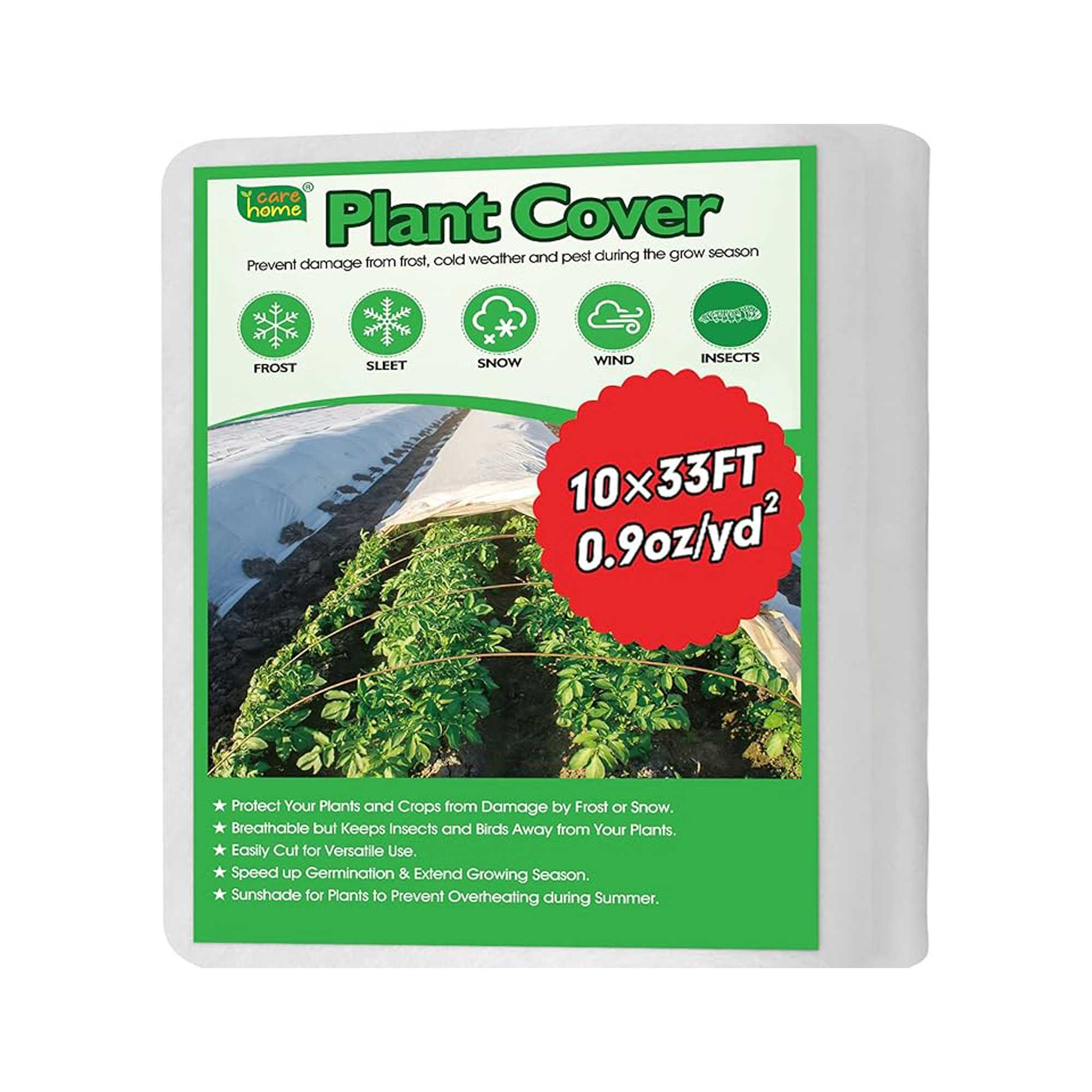How to overwinter outdoor yuccas – expert tips to help them survive extreme winter weather
These desert-loving plants need a little help during the winter months
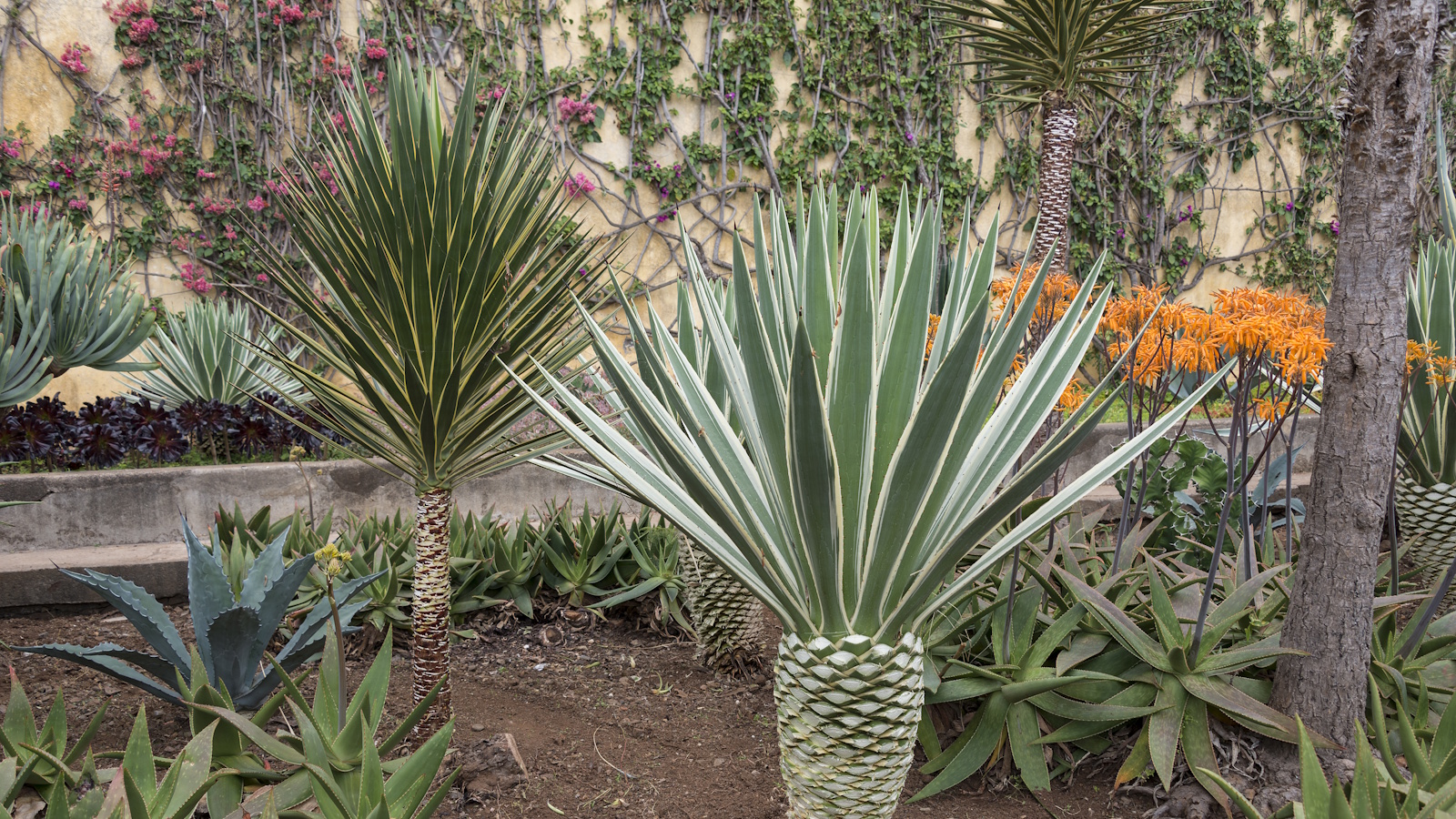

Outdoor yuccas make a striking display in any yard with their abundance of long, thin, spiky leaves spreading out across flower beds. If you are looking for structural plants for your borders, yuccas are one species to try.
They can add an architectural element to your winter garden and also offer an impressive show of flowers in late summer and early fall with tall spears of bell-shaped blooms.
Although they thrive in desert conditions, they are surprisingly frost-hardy plants when it comes to withstanding chilly weather. However, there are some steps to take to ensure your plants survive cold snaps, and here, experts give their tips on how best to overwinter outdoor yuccas.
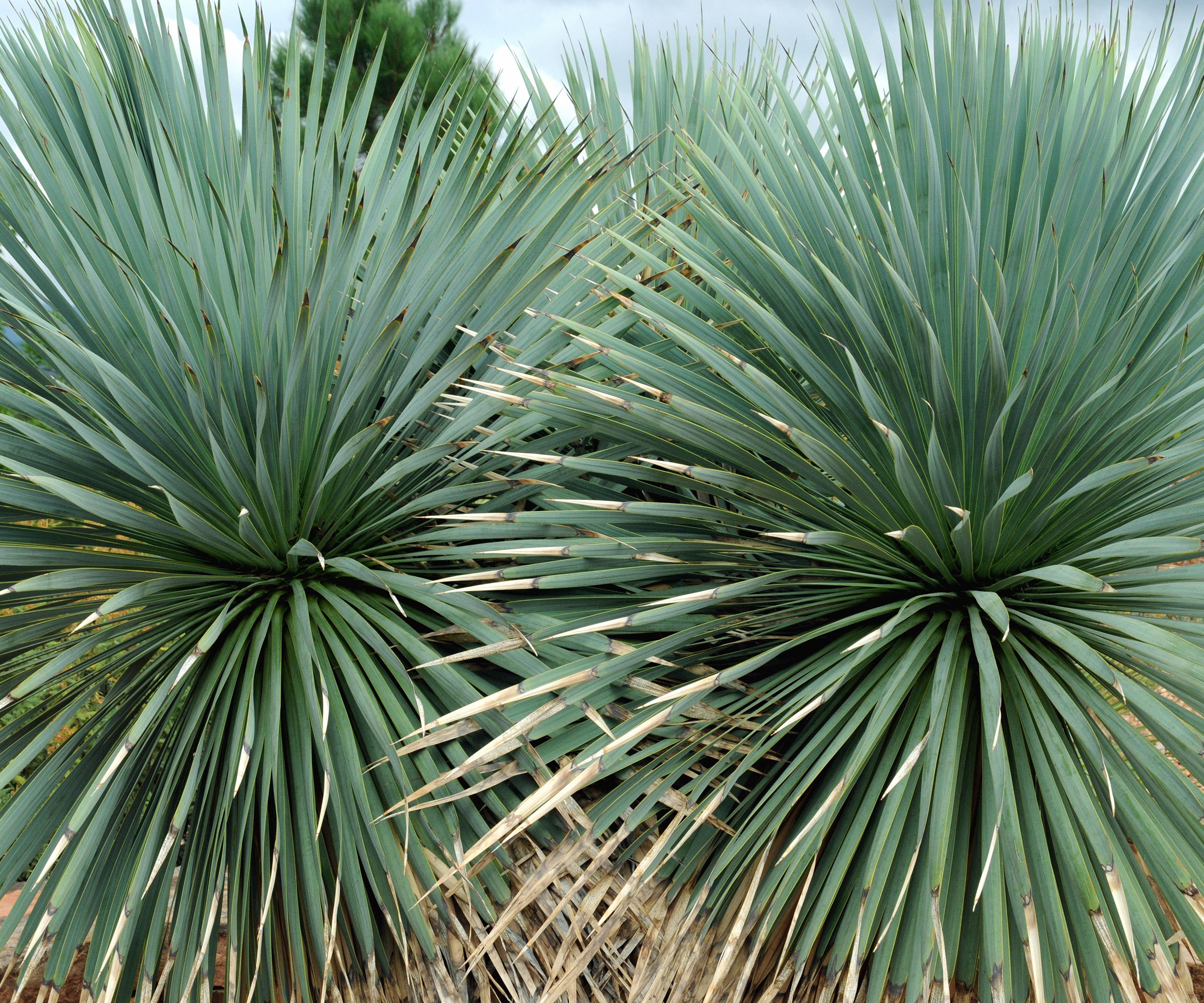
What is a yucca?
Yucca is a perennial shrub or tree from the Asparagaceae or asparagus family. They are native to the Americas and have evergreen, sword-shaped leaves with sharp, pointed tips. The leaves are tough and sharp, and when tending these plants, gardeners would do well to wear protection for their eyes, like this Kjriver Blue Light Blocking Protective Eyewear from Walmart.
The outdoor yucca can make itself at home in the most inhospitable conditions, such as deserts, prairies, mountains and sandy coastlines. But they grow well in domestic yards too, preferring the sunniest spots and well-drained soil.
In terms of yucca plant care, they 'generally thrive for outdoor growth and are hardy from US hardiness zones 5 to 10 depending on the species,’ says John Haryasz, a horticulture writer and landscape designer.
‘Due to their drought resistance, they are best suited for xeriscaping conditions (where they need minimal amounts of water to grow), although they also do well with the occasional shower as long as their roots don't get too soggy.’
Design expertise in your inbox – from inspiring decorating ideas and beautiful celebrity homes to practical gardening advice and shopping round-ups.
Preparing Yuccas for Winter
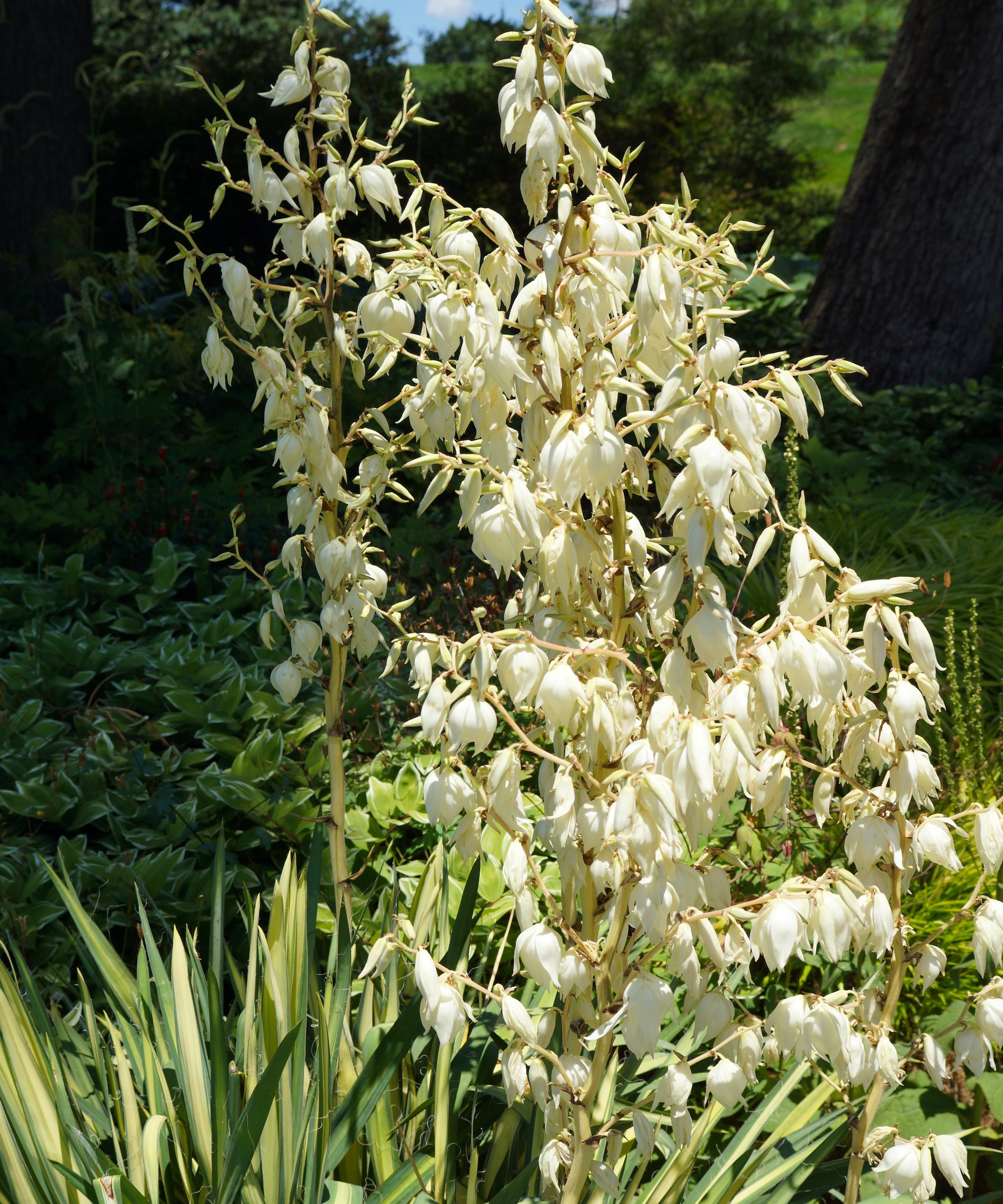
The first step is to get rid of the bare stalks after the flowers are finished as they can quickly start to look straggly.
‘The yucca’s dramatic flower spikes are showstoppers in any garden, but once they’ve bloomed, they’ve done their job,’ says David Miller, an experienced arborist. ‘Removing the spent flower stalks is essential for the plant’s health and appearance. After the blooms fade, I grab my pruners and cut the stalk right down to its base.'
These Wicked Tree Gear Carbon Steel Bypass Hand Pruners from Lowe's should easily deal with the thick stems.
'This cleanup redirects the plant’s energy back to its evergreen leaves, which remain the star attraction throughout winter.' explains David. 'Pruning doesn’t harm the plant. If anything, it gives the yucca a tidier, fresher look.’
You can also take the opportunity to trim away any brown and damaged foliage to neaten the plant’s appearance and ensure it continues to thrive.

Landscape designer and horticulture writer John has a degree in landscape architecture from the University of Massachusetts. He's led many successful design projects throughout the US. He's passionate about sharing his horticulture and design knowledge to help people engage with their outdoor spaces.

David is an experienced arborist with a tree service business in Austin, Texas. With years of experience in plant care and maintenance, he focuses on sustainable practices while nurturing and enhancing the beauty of gardens and landscapes.
Beware of root rot
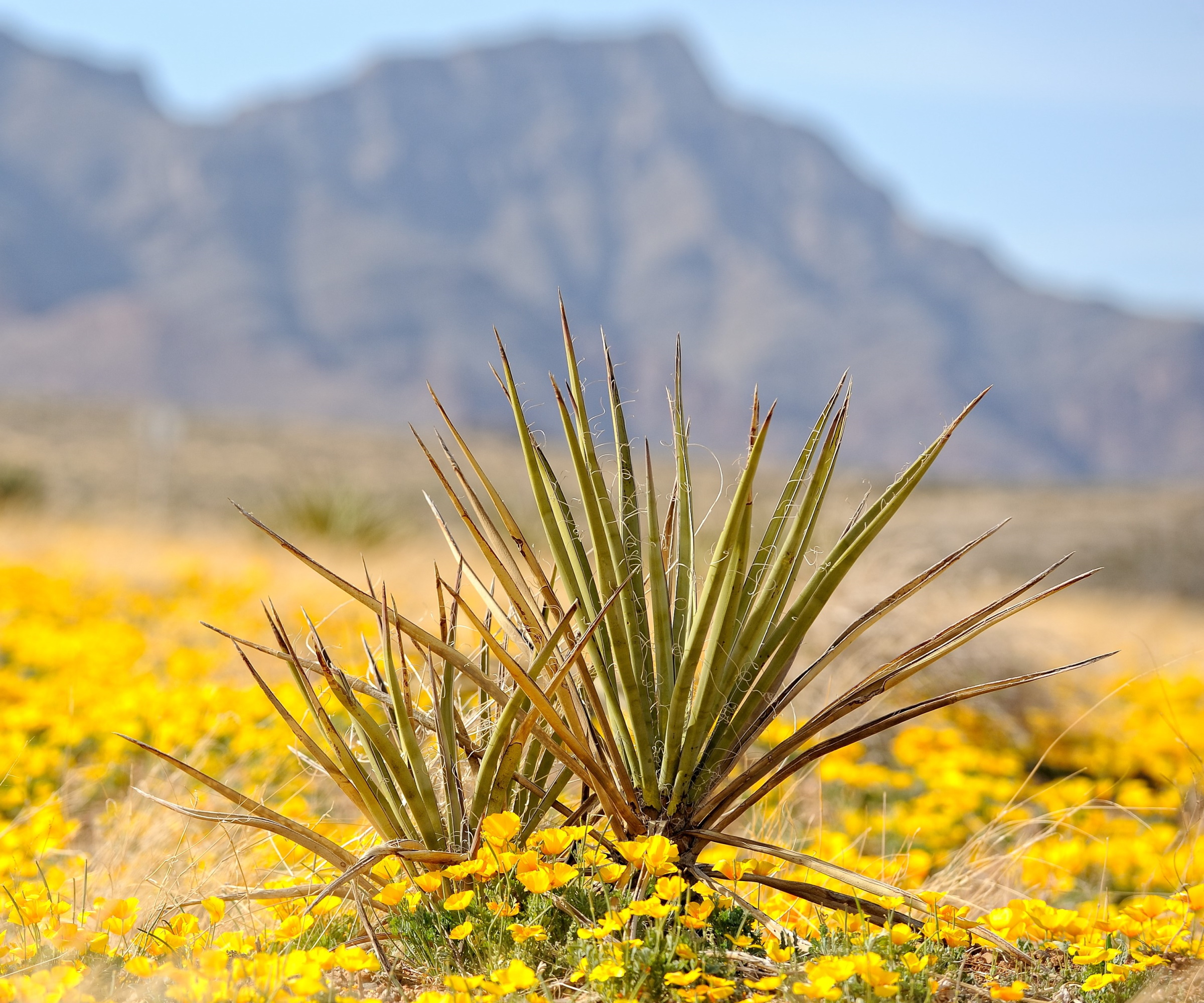
As desert plants, a wet winter can be disastrous for a yucca if the soil surrounding it gets overly soggy, causing the leaves to yellow and droop.
‘Excess moisture is the most frequent culprit behind yucca problems,’ explains David. ‘Their roots simply can’t handle standing water, so ensuring proper drainage is critical, especially in rainy winters.’
If you live in a zone where there are frequent downpours, some careful planning when choosing where to plant your yuccas can help to pre-empt these issues, he suggests.
‘In gardens prone to water pooling, I’ve had success planting yuccas on small mounds or in raised beds to keep excess moisture at bay. When winter rains arrive, these elevated spots ensure the water doesn’t linger around the roots, which could spell disaster.’
For a quick solution to make sure the earth is free-draining, mix in sandy soil or gravel around the base.
Keep your yucca warm
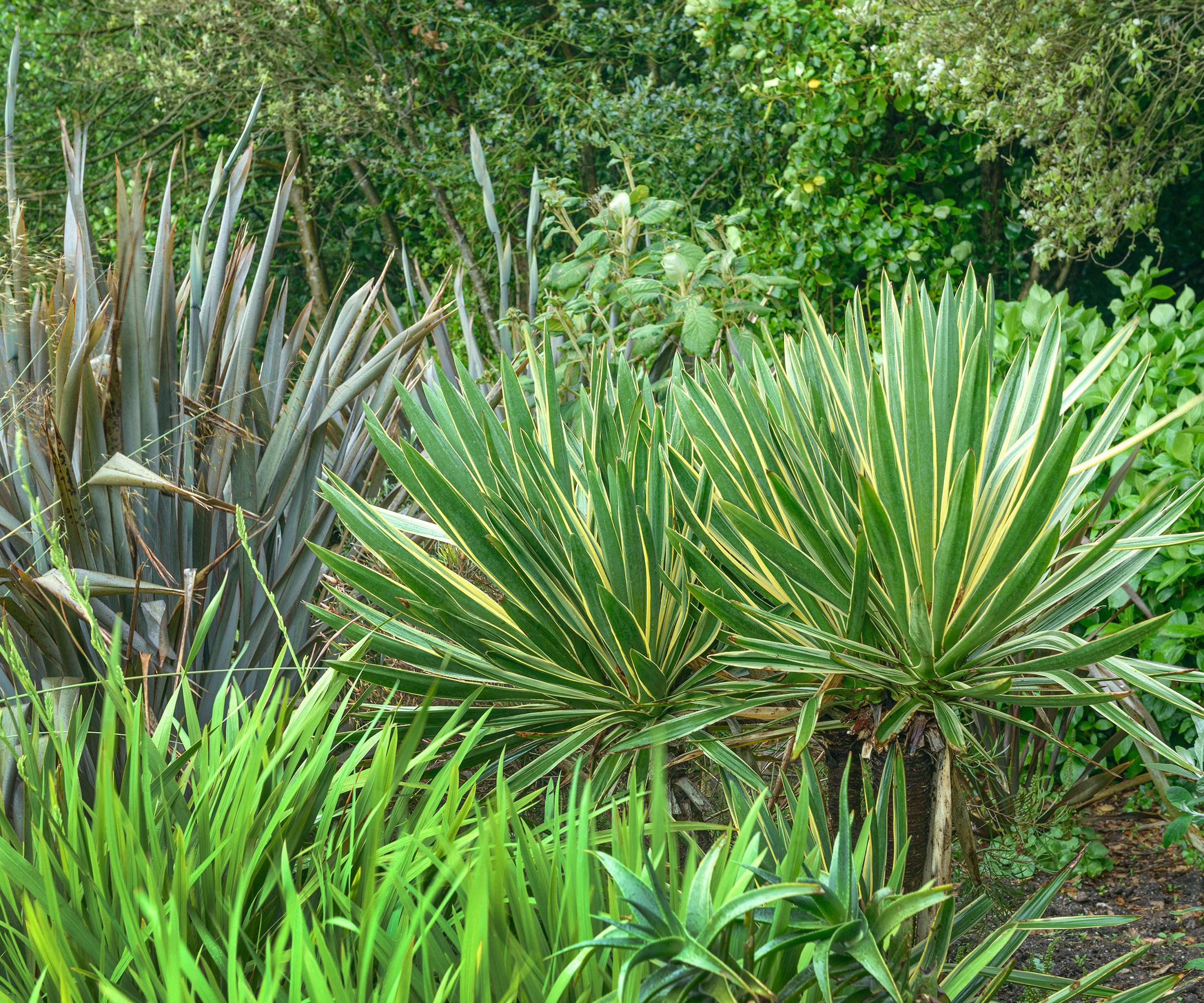
Ensuring that there is three to four inches of mulch made from straw, bark or dried leaves around the yucca – covering the roots but kept away from the crown of the plant – will help it to retain moisture and act as an insulator.
‘In areas where heavy snowfall is common, yuccas benefit from a breathable covering like burlap,’ says David. ‘This protects the crown of the plant from the weight of snow and prevents ice from collecting in the center. If you’ve ever dealt with yucca rot caused by ice buildup, you’ll understand why this step is non-negotiable.’ he adds.
During the festive season, you can introduce a touch of sparkle while also adding a little extra warmth when the temperature plummets.
‘If an extreme cold nap is coming, wrap your yucca in incandescent Christmas lights, as these give off heat,’ advises landscaper Tom Monson. ‘Once the lights are secured and on, wrap the plant in frost cloths or burlap.
‘You can add hot water bottles to the base of the plant as well, to get through the worst of the cold. Lastly, build a cage around the yucca with chicken wire, then cover that in cloth to keep the snow from building up directly on the plant.‘

Tom has been working in landscaping and yard maintenance since he was a teenager, when he started his own lawn care company. Monson Lawn and Landscaping now services hundreds of residential and commercial properties in the Twin Cities area.
FAQs
What do I do with my yucca plant after winter?
After the winter is over, you can deal with any problems that might have gotten past your extreme weather defenses.
'The leaves of the plant turn darker in color in the case of frost damage,' says John. 'Cut those off during spring.
'Yucca plants tend to bounce back with time. Given the right amount of care, it is not uncommon for them to flourish for decades in outside settings.'
Lightly feed the yuccas with a balanced fertilizer for a boost ahead of the growing season, such as this Triple 10 All Purpose Liquid Fertilizer 10-10-10 from Amazon, which has Amino Acids & Seaweed Extract for good plant health.
A dry climate with little rain can be a challenge to the gardener. But it needn't mean your yard has to be arid and dusty. Follow our advice on creating a dry garden and it will soon be filled with lush and colorful plants that require little maintenance.

Alison is a contributing gardens writer for Homes & Gardens, writing on a range of topics from plant care to garden design. She has recently landscaped the outside space of her Victorian home, replacing crazy paving and cracked slabs with new lawn, and is currently cultivating a fruit bed.
